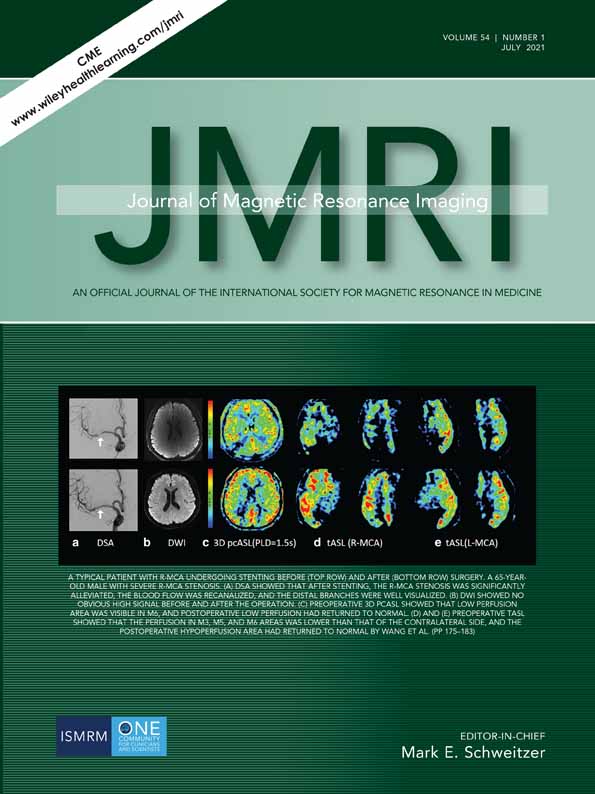Texture Analysis of Native T1 Images as a Novel Method for Noninvasive Assessment of Uremic Cardiomyopathy
The first two authors contributed equally to this work.
All authors have contributed significantly, and that all authors are in agreement with the content of the manuscript. The authors claim that none of the material in the paper has been published or is under consideration for publication elsewhere.
Abstract
Background
Noncontrast cardiac T1 times are increased in dialysis patients which might indicate fibrotic alterations in uremic cardiomyopathy.
Purpose
To explore the application of the texture analysis (TA) of T1 images in the assessment of myocardial alterations in dialysis patients.
Study Type
Case–control study.
Population
A total of 117 subjects, including 22 on hemodialysis, 44 on peritoneal dialysis, and 51 healthy controls.
Field Strength
A 3 T, steady-state free precession (SSFP) sequence, modified Look–Locker imaging (MOLLI).
Assessment
Two independent, blinded researchers manually delineated endocardial and epicardial borders of the left ventricle (LV) on midventricular T1 maps for TA.
Statistical Tests
Texture feature selection was performed, incorporating reproducibility verification, machine learning, and collinearity analysis. Multivariate linear regressions were performed to examine the independent associations between the selected texture features and left ventricular function in dialysis patients. Texture features' performance in discrimination was evaluated by sensitivity and specificity. Reproducibility was estimated by the intraclass correlation coefficient (ICC).
Results
Dialysis patients had greater T1 values than normal (P < 0.05). Five texture features were filtered out through feature selection, and four showed a statistically significant difference between dialysis patients and healthy controls. Among the four features, vertical run-length nonuniformity (VRLN) had the most remarkable difference among the control and dialysis groups (144 ± 40 vs. 257 ± 74, P < 0.05), which overlap was much smaller than Global T1 times (1268 ± 38 vs. 1308 ± 46 msec, P < 0.05). The VRLN values were notably elevated (cutoff = 170) in dialysis patients, with a specificity of 97% and a sensitivity of 88%, compared with T1 times (specificity = 76%, sensitivity = 60%). In dialysis patients, VRLN was significantly and independently associated with left ventricular ejection fraction (P < 0.05), global longitudinal strain (P < 0.05), radial strain (P < 0.05), and circumferential strain (P < 0.05); however, T1 was not.
Data Conclusion
The texture features obtained by TA of T1 images and VRLN may be a better parameter for assessing myocardial alterations than T1 times.
Level of Evidence
4
Technical Efficacy
Stage 3
CONFLICT OF INTEREST
The authors of this manuscript declare no relationships with any companies, whose products or services may be related to the subject matter of the article.




